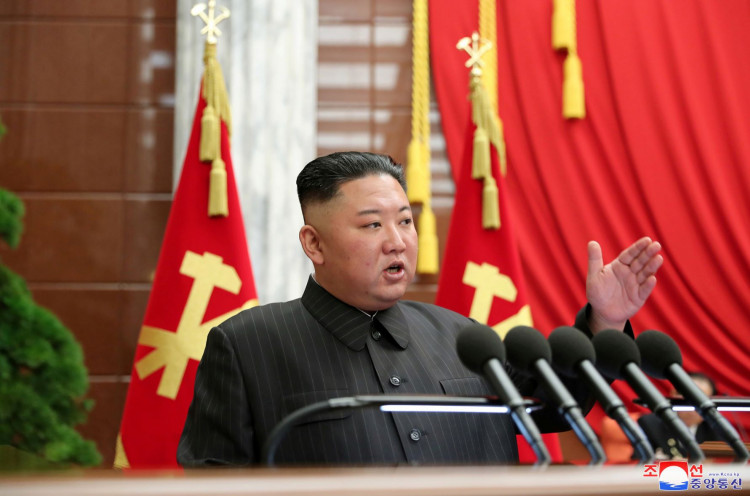North Korea has announced a significant breakthrough in its efforts to develop a more powerful and agile hypersonic missile, claiming to have successfully tested a solid-fuel engine for its new intermediate-range weapon. The test, which took place on Tuesday at the Sohae Satellite Launching Ground, was overseen by North Korean leader Kim Jong Un, according to the official Korean Central News Agency (KCNA).
The development of the multi-stage solid-fuel engine is seen as a crucial step in North Korea's pursuit of hypersonic weapons capable of evading missile defense systems deployed by the United States and South Korea. Experts suggest that the new missile is designed to strike distant U.S. targets in the region, particularly the U.S. Pacific territory of Guam, which is home to several U.S. military bases.
During the test, Kim Jong Un emphasized the strategic importance of the intermediate-range missile, claiming that it was as significant as intercontinental ballistic missiles (ICBMs) targeting the U.S. mainland. "Enemies know better about it," Kim stated, applauding the "great success in the important test."
North Korea has been working to develop intermediate-range missiles that can reach not only Guam but also Alaska, as well as closer targets such as U.S. military installations on Japan's Okinawa island. The country's focus on solid-fuel propellants is driven by the fact that they make launches more difficult to detect compared to liquid-propellant missiles.
While KCNA did not provide specific details about the engine tested on Tuesday or the technical nature of the test, the announcement suggests that North Korea is making progress in its pursuit of hypersonic weapons. These missiles are designed to fly at speeds exceeding five times the speed of sound and, if successfully developed, could pose a significant challenge to regional missile defense systems due to their speed and maneuverability.
Chang Young-keun, a missile expert at South Korea's Research Institute for National Strategy, predicts that Tuesday's engine test could be a precursor to a test-launch of the new hypersonic missile in the near future. The development of hypersonic weapons is just one of several high-tech weapons systems that Kim Jong Un has publicly vowed to achieve, citing what he perceives as deepening hostility from the United States.
The announcement of the successful engine test comes just a day after South Korea, the U.S., and Japan reported detecting multiple ballistic missile test-launches by North Korea, marking the country's first missile firings in approximately a month. Experts anticipate that North Korea will likely intensify its missile tests in the lead-up to the U.S. presidential election in November.
North Korea's progress in developing solid-fuel engines and hypersonic missiles has raised concerns among the international community, as these advancements could significantly enhance the country's military capabilities and pose a greater threat to regional stability. The U.S., South Korea, and Japan have responded to North Korea's provocative missile tests by expanding their bilateral exercises and trilateral drills, demonstrating their commitment to countering the growing threat posed by Pyongyang's weapons programs.






